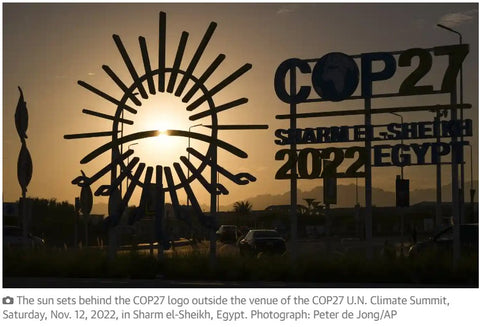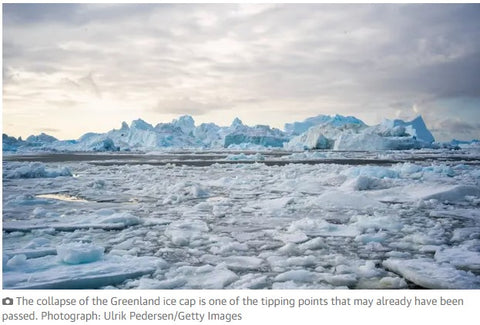COP27 Explained

Between the 6th and 18th of November, world leaders descended on Sharm El-Sheikh in Egypt for COP27. Now the dust has settled, we've broken down some of the key info for you.
What are COPs?
COPs (short for Conference of the Parties) are annual UN summits where all nations come together to try to solve climate change. They happen every year since their inception in 1995. The most famous recent one was COP21 in Paris in 2015, where the 'Paris Agreement' was devised to limit temperature rise to 1.5-2 degrees Celsius above pre-industrial levels.
What was the plan?
The key goal of COP27 was to agree a strengthened set of Nationally Determined Contributions (NDC's) - pledges by countries to reduce their emissions and remain aligned to the Paris climate accord.
The 1.5C pathway is slipping out of our grasp so it was seen as vital to strengthen global resolve to meeting it. Sticking to 1.5C would mitigate the worst effects of climate change, but passing it could trigger dangerous climate 'tipping points' (read on to the end for a 101 on what they are!).

Additional goals of COP27 include beefing up our adaption strategy - how we will live with climate change - and making progress on climate financing - richer countries helping finance climate friendly development in poorer countries.
What actually happened?
To many, COP27 was a bit of a disappointment. There was little progress on the main goal of the COP to ratchet up national commitments to drawdown global emissions.
However, there was significant progress in other areas – most notably in reaching an agreement for the first time on climate related loss and damage.
Loss and damage has long been seen as one of the most contentious issues at these talks, as it involves much more financial support from richer countries to help pay for the damaging effects of climate change in poorer countries, rather than just helping finance developments. The new agreement paves the way for greater global cooperation in tackling climate change.
What about food?
Another promising development at COP was in the agricultural sector, with an agreement for an Agriculture Sector Roadmap to be released by the UN food agency next year.

Food production accounts for over 1/3 of our global emissions. However, unlike some other sectors, there isn't yet global consensus on how we can reduce and ultimately remove those emissions.
That might be about to change, as the UN food agency have announced they will publish a roadmap to the 1.5C climate target by next year.
Currently, some of the largest food companies are struggling to align themselves to the 1.5C climate target, with debates over how soon they need to end practices such as deforestation. It is hoped that the UN food agency's road map will end those debates and allow transparency for investment into companies, technologies and projects aligned with the plan.
Climate Tipping Points
You’ll often hear climate tipping points being talked about in the news – not least because they have been included in a COP cover decision text for the first time – but what are they?

Tipping points are events which, once triggered by climate change, could 'lock-in' the change and cause irreversible damage. These tipping points range from melting ice caps and thawing permafrost, to changing weather and ocean circulation patterns and forest dieback.
A new study has found that we are getting dangerously close to, or may even have already passed, 5 of the 16 climate tipping points. These 5 are predicted to occur with 1.5 degrees warming - the lower end of the temperature limits set in the Paris climate accord – and include the collapse of the Greenland and West Antarctic ice sheets, which could lead to meters of sea level rise.
